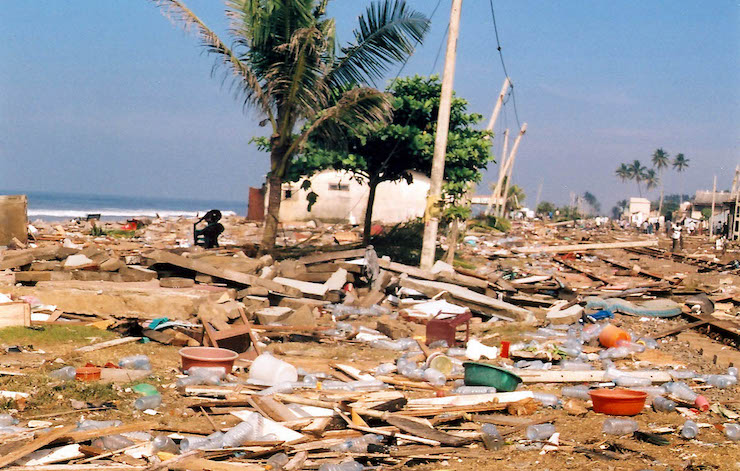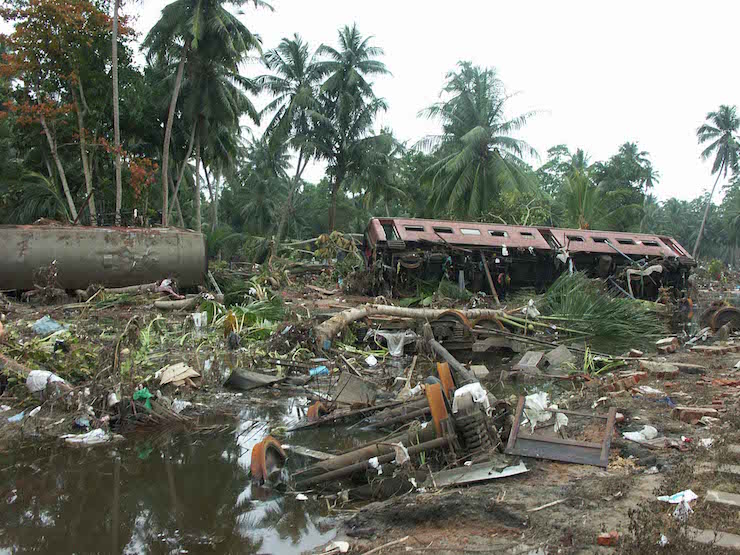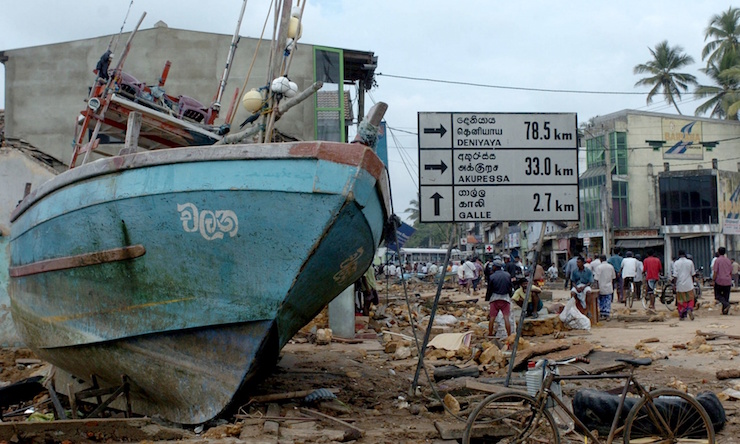Commemorating the lives we lost from the 2004 Indian Ocean Tsunami
26/12/2015 – Colombo, Sri Lanka: The Indian Ocean earthquake and tsunami of 26 December 2004 was an extraordinary event of such magnitude and destructive power, whose impact on humanity mean it will always be remembered as one of the world’s worst disasters.
Over 226,000 people were killed and the lives of millions of people were irrevocably changed. It was so far-reaching that damage was reported in 14 countries, from Indonesia across the Indian Ocean to the eastern seaboard of Africa.
In addition to the citizens of the countries directly affected, 40 countries from outside the affected region also lost citizens to the force of the tsunami, including many tourists. The widespread impact and human tragedy was so strikingly communicated to the world through the media that it generated an enormous response from millions of people from around the world who wanted to assist to help survivors receive emergency aid and to rebuild what they could of their shattered lives.
In Sri Lanka alone over 35,000 people died while over two million people were affected.
The response of the Sri Lanka Red Cross (SLRCS) with support from the International Federation of Red Cross & Red Crescent Societies (IFRC) and other Partner National Societies was huge, with enormous resources entrusted to it to carry out the relief and recovery work that followed the destruction. Such was the enormous scale and human toll of the disaster that the Red Cross, with its members, embarked upon the largest disaster operation in its history.
In Sri Lanka the SLRCS along with Red Cross Red Crescent partners have collectively either fully funded or co-financed the construction of 30,265 permanent houses in Sri Lanka. The livelihoods programme has supported over 7,930 households. Supporting newly resettled housing beneficiaries became the primary focus of most of the livelihood projects as it concentrated on providing these beneficiaries with cash grants to resume their normal lives.
SLRCS also implemented a community engagement programme to assist the beneficiaries to take possession and responsibility for their new homes. Workshops and trainings were conducted to help communities understand how to maintain and manage their houses. In addition to the houses that were constructed, a number of community centres, market places and playgrounds were also constructed and handed over to communities at several locations nationwide.
Below is the story of S. Nallathambi from Ampara, Eastern Sri Lanka who received livelihood support from the Red Cross. He lost everything during the 2004 tsunami. Watch below his story.
SLRCS along with Red Cross Red Crescent partners also focussed on rebuilding and reconstructing health infrastructure facilities. This rebuilding and reconstructing programme comprises of 66 projects undertaken in cooperation with the Ministry of Health. The scope of work included the construction of new buildings, and the renovation and refurbishment of existing health facilities together with the supply of new medical equipment.
In support of the National Water Supply and Drainage Board (NWSDB) reconstruction programme, 26 major water and sanitation infrastructure projects have been committed to by Red Cross Red Crescent partners. Many of these water and sanitation projects are highly complex, such as laying pipeline networks to new resettlement areas.
Also a Water Safety Programme was started in the back of the tsunami reconstruction programme by the Gampaha Branch of SLRCS.
This programme originated in strong requests from some of the local residents along the coast of Gampaha District, which was also affected by the Tsunami.
The requests included patrolling the coastline and reinforcing search and rescue systems in order to guard people against flood and drowning accidents.
Below is the story of Mangala Priya who is also a victim of the tsunami tragedy. But with the support of the Red Cross he now aids people in water safety. Watch his story below.
For more on the progress of the tsunami programmes and the support the Red Cross Red Crescent Movement has had in the lives of the people, please visit http://www.ifrc.org/tsunami


